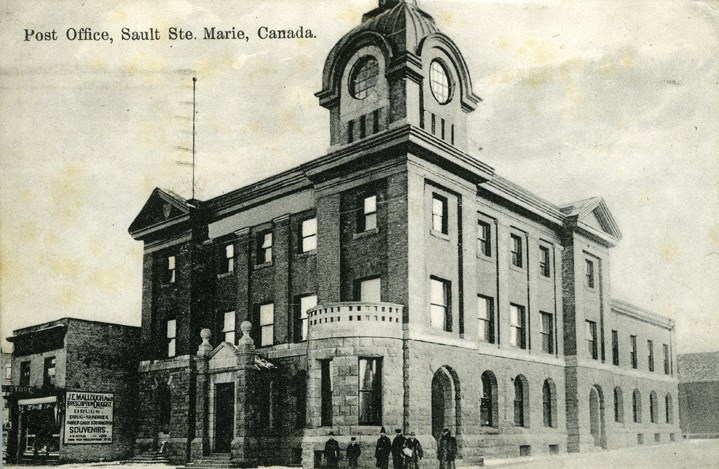From the archives of the Sault Ste. Marie Public Library:
Throughout the First World War, the treatment of Austrian and German immigrants in Canada got progressively worse – they had to sign in with authorities regularly, pay a poll tax, and face severe travel restrictions, among other restrictions. However, perhaps the most horrifying treatment of all came in the form of internment facilities.
In January of 1915, a station opened in Sault Ste. Marie, one of approximately 24 receiving stations and internment camps across the country. Throughout Canada, these camps interned a combined 8,500 “enemy aliens” under the War Measures Act. Less than half of these could be considered prisoners of war; the majority were simply civilians.
Sault Ste. Marie’s internment operations were headquartered in the Armoury from January 1915 to January 1918, located in the building that is now home to the Sault Ste. Marie Museum. Generally, the city’s operations functioned as a receiving station, where prisoners would stay temporarily on their way to a permanent internment camp. For example, many internees who came through were on their way to Kapuskasing, where they would be detained on a long-term basis. In these permanent camps, internees were put to work, logging, mining, constructing the camp itself, or performing other manual labour tasks, often for minimal pay. There were riots, negative physical effects due to the working conditions, and significant strains on mental health.
However, while Sault Ste. Marie largely served as a receiving station, there were some local men who were interned more permanently in the area. They were held first in a boxcar and then in bunkhouses on Whitefish Island, all under the supervision of the 51st Soo Rifles Regiment.
Steelton’s City Council debated what to do about the family members of those interned: should the government provide support to people if their main breadwinner was interned? Did the city have any duty to the “alien families”?
At least one local found internment to be a preferable alternative to daily life; with the tight restrictions on travel, regular requirements to check in with the police, and overall discrimination they experienced, people of Austrian heritage often found it difficult to find employment and support their families. According to a 1915 Sault Star article, one Austrian man requested to be interned, citing the free lunch and board that he would receive. The 51st Regiment’s Private McDonald responded that the man would only be interned if he was guilty of some offence; the Private suggested that swearing at one of the guards might do the trick. The man opted not to antagonize the guard, out of fear he would be shot.
However, for most, the camps were a horrifying reality to be avoided at all costs, and the threat of internment was a terrifying one. At one point, the Colonel in charge of the Sault’s militia forced a man to shave his moustache, took his bank book, and extorted a mortgage out of him, all under threat of internment. The man had a pregnant wife; desperate to avoid internment so he could continue to support her, he did whatever the Colonel said.
Local companies also benefited from these internment operations. With World War I came a worker shortage, and attention turned to internees as a source of labour. The railways, Abitibi, Spanish River Pulp and Paper, and Algoma Steel all used internees as a source of cheap labour.
Fortunately, the internment operations were short-lived. The Sault Ste. Marie camp would close three years after it opened, in conjunction with the end of the First World War. Travel restrictions were lifted by January 1920, and Austrians no longer had to check in monthly with the police, which removed a significant workload from the police department.
Since then, many records dealing with the internment operations have been destroyed. However, enough still remain to gain a clear picture of Canada’s treatment of enemy aliens during World War I — and Sault Ste. Marie’s connection.
Each week, the Sault Ste. Marie Public Library and its Archives provides SooToday readers with a glimpse of the city’s past.
Find out more of what the Public Library has to offer at www.ssmpl.ca and look for more Remember This? columns here
